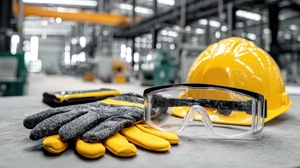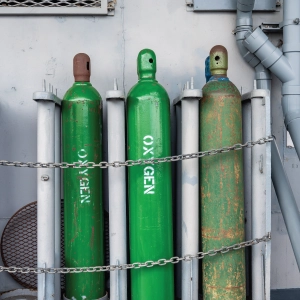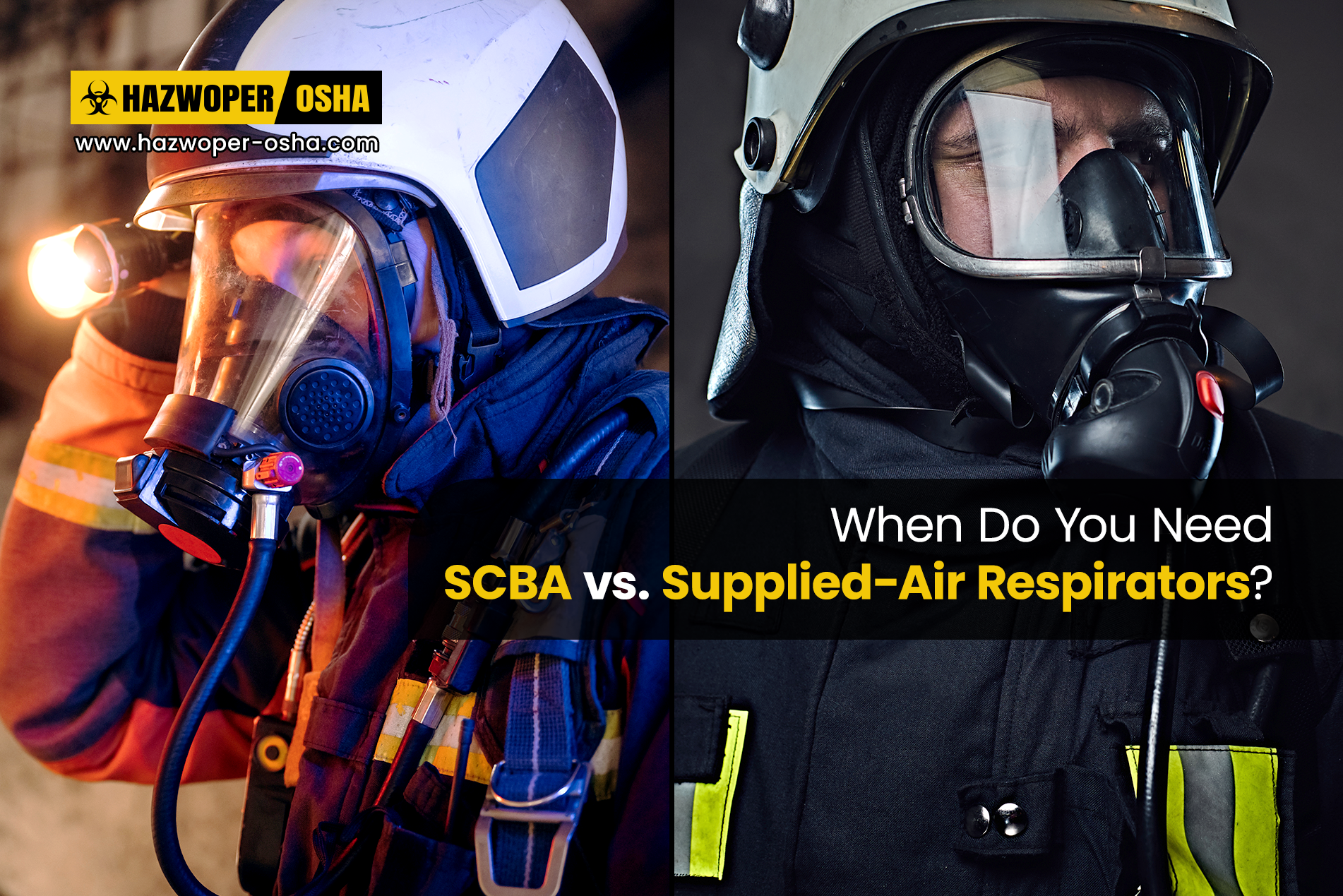Safe Working Practices: Excavation & Trenching
Let’s Watch a Video First!
Construction industry workers are highly exposed to various types of risks when their work requires them to work in open trenches and/or undertake excavation-related work. In fact, OSHA has records of 28 incidents where workers were killed or injured due to trench or excavation collapses, or other equipment-related injuries when working at such sites in the year 2020 alone (OSHA, 2020)! Furthermore, the U.S. Bureau of Labor Statistics (BLS) reports 95 fatalities in 2019 due to workers falling through a surface or existing opening. These statistics together with BLS’s data on the construction industry having the largest number of fatalities in 2019 bring to the forefront the need to ensure worker safety (BLS, 2019b).
To raise awareness of the inherent dangers when working in trenches, the National Utility Contractors Association with the support of OSHA and in collaboration with other concerned partners annually holds a Trench Safety Stand Down Week to coincide with the Trench Safety Month of June. The goal of this event is to increase awareness of the trenching and excavation hazards and to provide a forum where employers can directly speak to employees and spread the information relevant to improving processes and procedures related to safety when performing construction work in trenches or excavations.
With cave-ins and collapses being the most common hazard encountered when working in trenches, a reliable way to prevent such disasters resulting in workers' engulfment in sand and rock and other types of injuries is to use the most appropriate type of excavation and trenching protective systems. OSHA recommends several types of trenching protective systems, including benching, shoring, sloping, and shielding. Recommendations such as clear and safe entry and exit points, storing of equipment and other tools at appropriate distances from the trench openings, and the correct use of heavy equipment and tools in and around the excavation and trenching sites are also given by OSHA. Our blog on Excavation and Trenching – Hazards and Safeguards will give more guidance on these areas. However, for the best results and increased measures of safeguard, employers should ensure workers expected to work in trenches and excavations, or those digging up these excavations and trenches are given adequate training according to OSHA’s excavations regulations specified in 29 CFR 1926 Subpart P.
Another important requirement for trenches and excavations by OSHA is the need for a competent person to inspect the trenching or excavation sites every day; before work begins. They must inspect for hazards and ensure the stability of the trench or the excavation site including the protective system being used. Competent persons are also responsible for examining and classifying the soil types, guiding and directing on the correct methods to excavate trenches, recommending the use of the right type of protective systems, designing ramps for worker access or egress (entry and exit points), and monitoring use of the equipment at these sites as well as water removal equipment.
Enroll in our OSHA-compliant online training course for the Competent Person for Excavation, Trenching, and Shoring to get information and get yourself the relevant book knowledge before obtaining the on-site and on-the-job training.
Safeguard Workers from Falling Hazards
Here are some numbers which employers must be remembered to ensure compliance with the OSHA excavation standard and to protect the safety and health of their employees.
| Distance | Adopt these Best Practices as Recommended by OSHA |
|---|---|
| 2 feet (0.61 meters) |
To safeguard workers from hazards of falling excavated soil, materials, tools, or equipment inside the excavation or trench, keep these at least 2 feet from the edge. |
| 4 feet (1.22 meters) |
Provide ladders, steps, ramps, or other safe means of egress when the trench or excavation reaches 4 feet or deeper. Also note, when an excavation or trench reaches a depth of 4 feet and more, test the atmosphere for low oxygen levels, poisonous gases, and toxic fumes before worker entry when it is reasonably expected by a competent person. |
| 5 feet (1.52 meters) |
According to the OSHA excavation standard, a trench or excavation that is less than 5 feet in depth and has been inspected and cleared by a competent person as having no risk of a cove-in requires no protective system. However, trenches and excavations 5 feet or deeper must be fitted with an appropriate protective system. Also note, if the excavation is made entirely in stable rock there is no need for a protective system. |
| 20 feet (6.1 meters) |
A protective system must be designed or approved by a registered professional engineer when excavation or trench reaches and exceed 20 feet in depth. |
| 25 feet (7.62 meters) |
And remember, that any egress provided must not exceed 25 feet laterally within the trench or excavation to ensure workers are protected always. |
(OSHA, 2015)
Essential Trenching and Excavation Safety Guidelines for Workers
- Maintain Safe Distances Around Trenches: Keep heavy equipment, excavated soil, and spoils at least 2 feet (0.6 meters) from trench edges to help prevent trench collapses and maintain stability.
- Identify Trench Hazards and Potential Risks: Evaluate potential trench hazards that can impact stability, including nearby structures, soil conditions, and underground utilities. Always locate and mark utilities before trenching to avoid damaging buried infrastructure.
- Test for Hazardous Atmospheres in Deep Trenches: When trenches exceed 4 feet in depth, test the atmosphere for hazards like low oxygen, toxic gases, and hazardous fumes to ensure safe conditions for workers.
- Ensure Safe Entry and Exit Points: Provide clear, accessible entry and exit points for safe trench access, reducing the risk of injury when workers enter and exit.
- Conduct Regular Trench Inspections: Inspect trenches daily at the start of each shift, after any rain or water intrusion, and following events that may affect trench stability.
- Avoid Working Under Suspended Loads: Never work beneath raised or suspended loads to reduce the risk of accidents from falling objects in the trench area.
- Control Standing Water and Trench Hazards: Before entering a trench, check for standing water and other potential hazards, especially after rain.
- Keep Trench Edges Clear of Materials: Position soil, rocks, tools, and other materials at least 2 feet from the trench edge to prevent falls or collapses and keep workspaces clear.
- Use Proper Trench Protective Systems: For deep trenches or those with unstable soil, use protective trenching systems, such as trench boxes or shoring, to protect workers and ensure a safe environment.
- Wear High-Visibility Safety Clothing: Workers exposed to traffic near trenches should wear high-visibility clothing or other appropriate safety gear.
- Daily Safety Inspections by Competent Person: A competent person must inspect and clear the trench for safety daily before work begins, ensuring compliance with trench safety standards.
Implementing these comprehensive trenching and excavation safety guidelines helps companies maintain a safe, compliant work environment, significantly reducing risks to trench workers on-site.
(OSHA, 2019a, 2019b)
References:
BLS. (2019a). Economic News Release. Table 2: Fatal occupational injuries for selected events or exposures, 2015-19. Website. https://www.bls.gov/news.release/cfoi.t02.htm
BLS. (2019b). Census of Fatal Occupational Injuries (CFOI) – Current. Number and rate of fatal work injuries, by industry sector. Website. https://www.bls.gov/iif/oshcfoi1.htm
OSHA. (2015). Trenching and Excavation Safety. Publication. Website. https://www.osha.gov/sites/default/files/publications/osha2226.pdf
OSHA. (2019a). Trenching Safety: 5 Things You Should Know to Stay Safe. Website. https://www.osha.gov/sites/default/files/publications/OSHA3974.pdf
OSHA. (2019b). Keep Trenches Safe for Workers. Website. https://www.osha.gov/sites/default/files/publications/OSHA3971.pdf
OSHA. (2020). Fatality and Catastrophe Investigation Summaries. Accident search results. Website. https://www.osha.gov/pls/imis/accidentsearch.search?sic=&sicgroup=&naics=&acc_description=&acc_abstract=&acc_keyword=%22Excavation%22&inspnr=&fatal=&officetype=&office=&startmonth=&startday=&startyear=&endmonth=&endday=&endyear=&keyword_list=on&p_start=&p_finish=0&p_sort=&p_desc=DESC&p_direction=Next&p_show=20

 EN |
EN |  ES
ES






























































































































